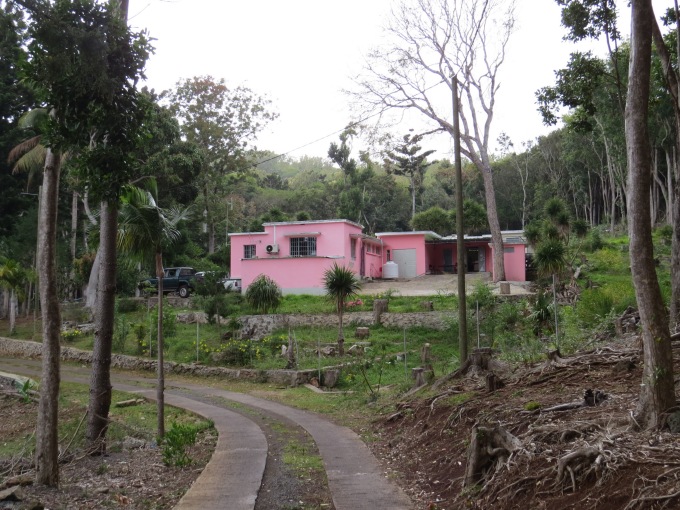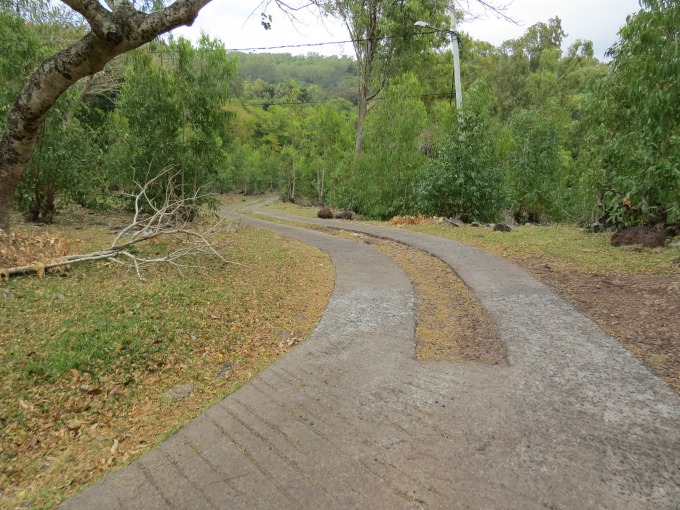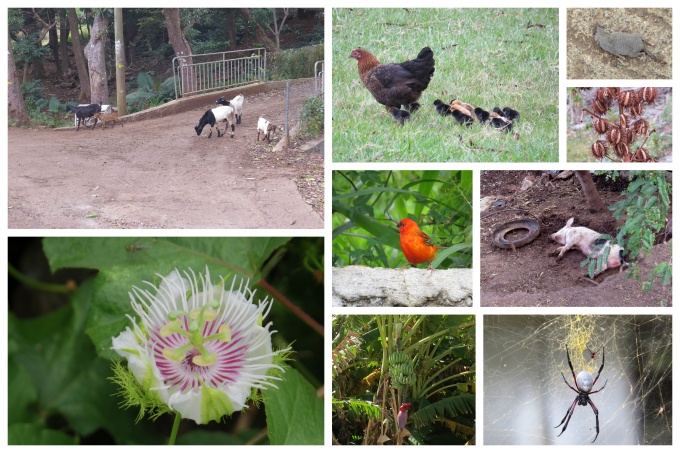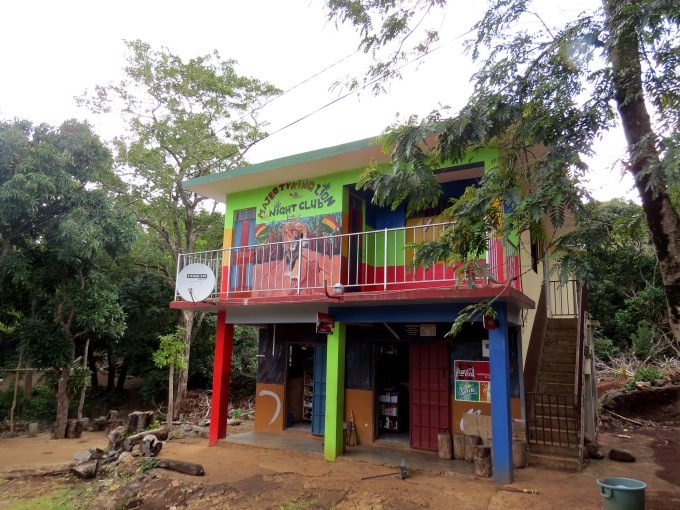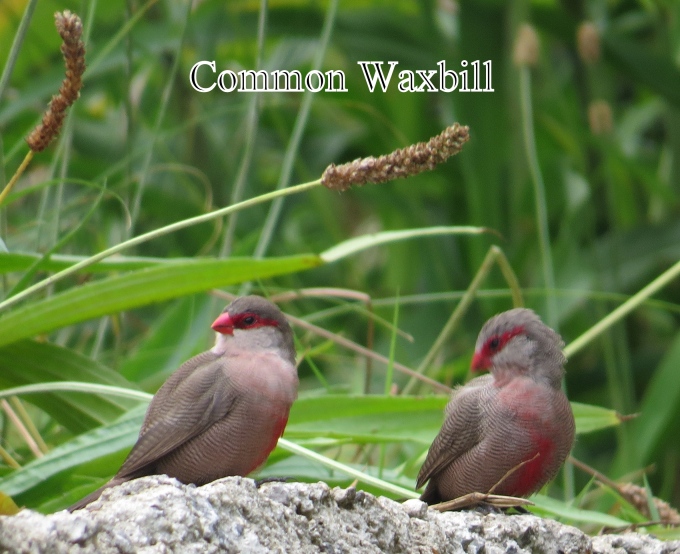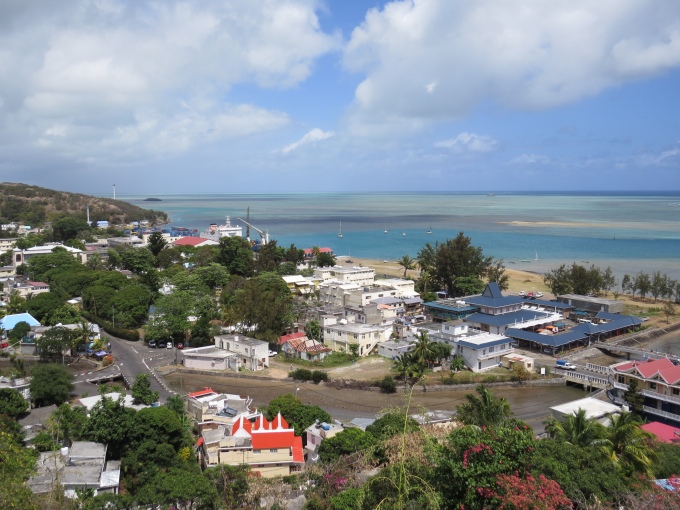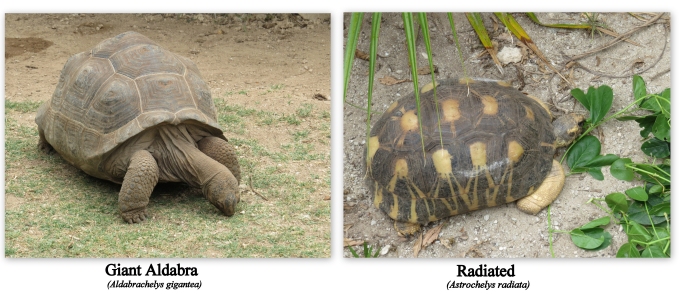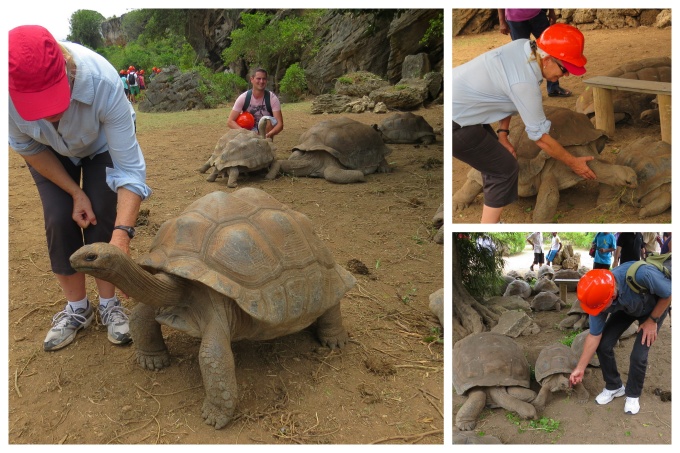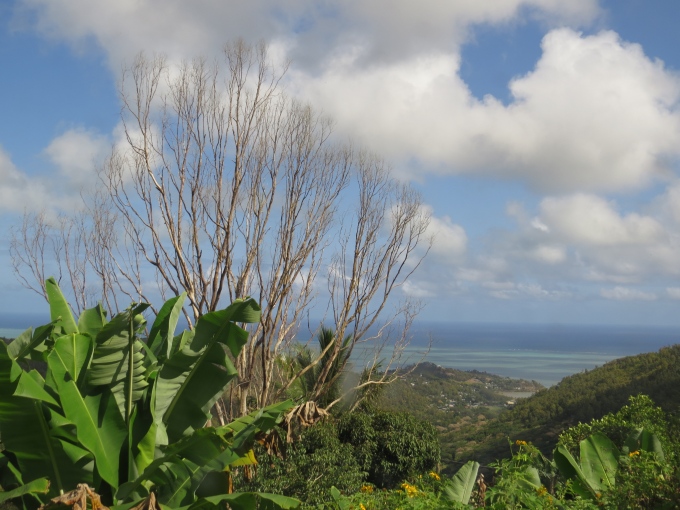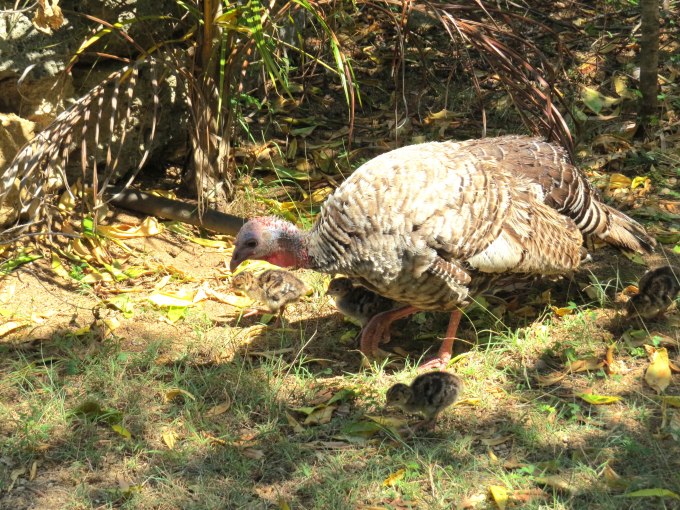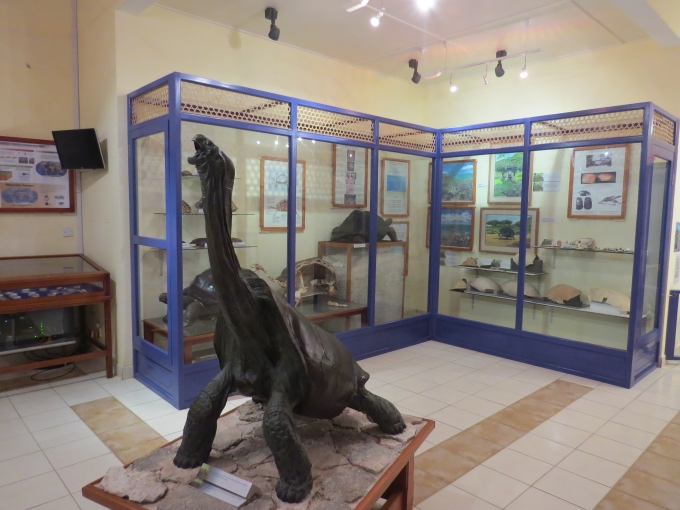Finding Solitude...and Lunch
/We had dedicated a couple of days to boat chores and so I didn't feel guilty about negotiating another day for seeing more of Ile Rodrigues. I'd read of two endemic birds that seem to hang out in the early morning near the Forest Station in the tiny village of Solitude, a quick bus ride from Port Mathurin. We confirmed what bus to take and were on our way by 0745. When the bus stopped at a tiny bus stop in the middle of nowhere and the conductor pointed to a path through the forest, we were a bit skeptical, but we got off and headed down the steep path. Sure enough, after a couple minutes on a heavily rooted, dirt track, the path merged with a road and we spotted a bright pink building down the way which turned out to be the Forest Station.
We were looking for the Rodrigues fody and the Rodrigues warbler. No, we're not really twitchers … birdwatchers, although we enjoy identifying birds. But there's something about seeing endemic animals that occur nowhere else in the world that's kind of a thrill. The Forest Station guy wasn't really interested in talking to us (could be my terrible French!). We asked the best place to spot fodies and he said “in the forest”. No kidding! We continued along the road, two tracks of cement with mud in the middle, up a steep hill with forest on both sides. We saw a warbler. No pic, but we saw him.
We walked for several kilometers and saw lots of goats, a dead mouse, more huge spiders than I care to acknowledge, several feral chickens with chicks, several Madagascar red fodies, scads of ubiquitous mynahs and house sparrows, a sleeping pig, banana trees, several odd looking flowers and plants, but no Rodrigues fody.
When we spotted the Majestic King Lion Nightclub at a small crossroad, we figured we'd reached downtown Solitude. There were several rudimentary houses scattered here and there up the hill and the ground level of the nightclub seemed to offer some basic supplies like CocaCola and Phoenix beer and junk food.
We retraced our steps back to the Forest Station, standing under the dense forest cover during intermittent showers. We found the ranger guy again and lamented not seeing any fodies. He blamed it on the rain and gave us an “oh, well” shrug. We did spot some common waxbills, which actually weren't common at all to us and finally left Solitude, deciding to walk the two klicks back into town.
Our walk down the very steep, switch-backed road to Port Mathurin was a bit dodgy. There are no sidewalks and the roads are narrow and quite busy at this time of the morning. At one point, we climbed down a bank to avoid walking across a very narrow bridge with no place whatsoever for pedestrians. We had seen a lookout platform high above the town and found it on our way back. The views were terrific. We could see Nine of Cups at anchor and the whole town spread below us like a colorful mosaic.
It was mid-morning and we were back in town. Surely, this shouldn't conclude our day. What to do? Another cruiser had mentioned the tiny beach town of St. Francois. He had gotten there on a motorbike, but thought perhaps the bus went there as well. We checked, it did, and we boarded the next bus out of town. The bus chugged up the same hill we had just descended and finally headed towards the east end of the island. The views were great and different from what we'd seen on our way to the Tortoise Reserve.
We arrived in St. Francois just around lunch time. Our friends had bragged about a little thatch-covered beach resto that served fresh-caught grilled fish, lobster, chicken … whatever was available for their oil-drum-cut-in-half grill. We spotted Robert and Soulange's little place about a kilometer or so from the bus stop. They only had about six tables and, lucky for us, one was available.
The place was charming. We sat in plastic chairs at a plastic table, our feet planted in beach sand. The sun was shining and we could hear the sound of the surf not far away. Small sparrows peeked from the bamboo rafters of the thatched roof and swooped down every once in awhile for bread crumbs in the sand. Soulange put a fish on the grill for us, while Robert hacked at coconuts for other guests. The meal was excellent … grilled fish and chicken, salad, bread, drinks, espresso and a coconut tart … all for 500Rps (about $17US).
We walked along the beach afterward. It was high tide and there wasn't much beach, but the view was stupendous on such a glorious day. We reluctantly headed back to the bus stop. It was a long walk back to Port Mathurin if we missed the last bus. All in all, a terrific day exploring a bit more of Rodrigues. And now, unfortunately, it's time to move on.
And lest you thought we forgot … Happy Hallowe'en everyone!


